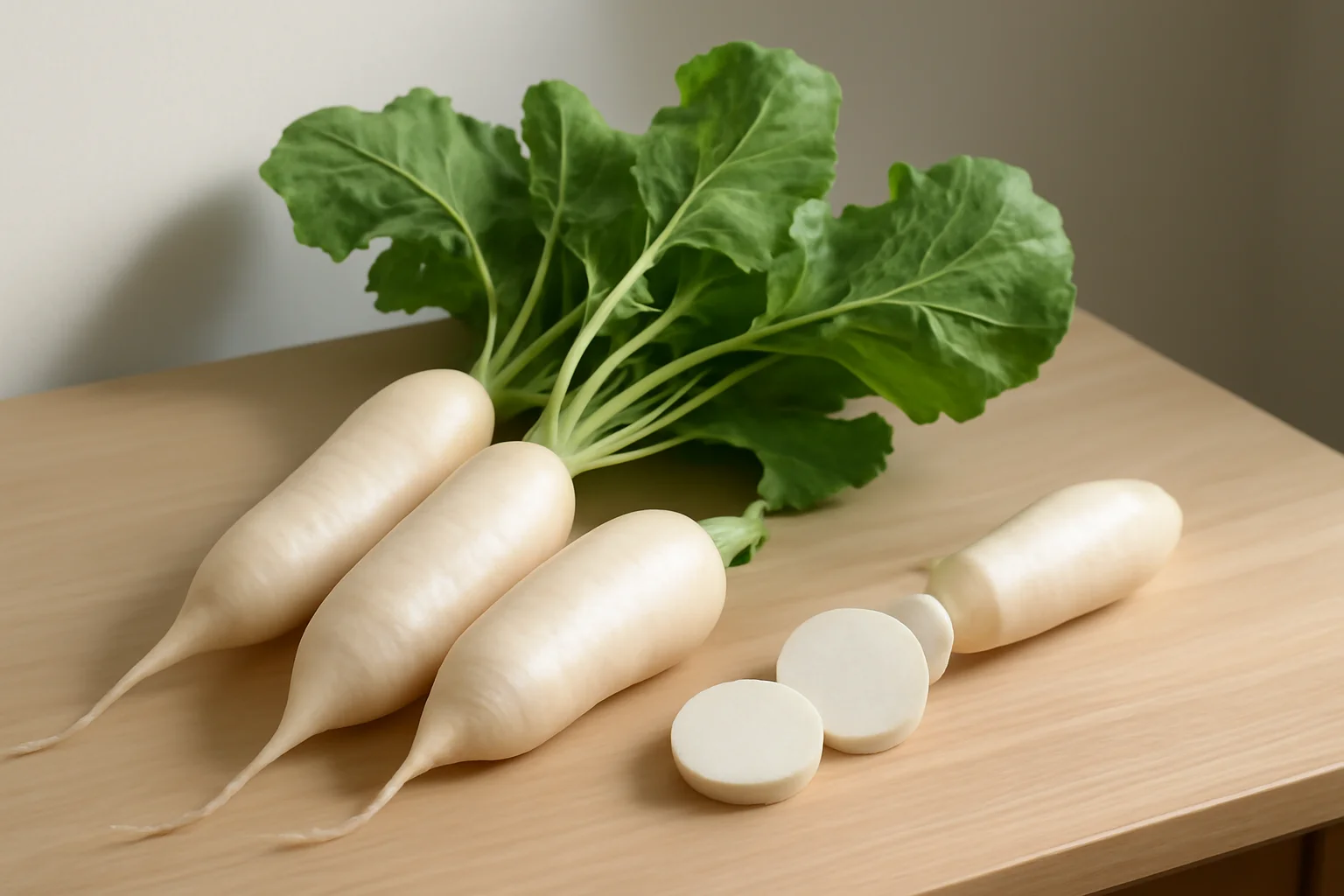
The beneficial effects and health benefits of white radish
The white turnip, this versatile root vegetable, is not only delicious but also has numerous beneficial effects. It can be used in various ways in the kitchen, whether in soups, salads, or side dishes. Additionally, due to its nutritious components, the white turnip can contribute to maintaining health. It is related to carrots and horseradish, but it stands out with its unique flavor profile and nutrient content. The white turnip is rich in vitamins, minerals, and fiber, making it worthwhile to incorporate into our diet.
The white turnip is particularly popular during the winter months when the availability of vegetables is more limited, and people crave healthy, nourishing meals. Its many beneficial effects are recognized not only in the kitchen but also in folk medicine, as the vitamin and mineral content of the white turnip can aid in the healthy functioning of the body. Moreover, the white turnip is easily obtainable and relatively inexpensive, making it an ideal choice for those who want to eat economically and healthily.
The Nutritional Content of the White Turnip
The white turnip is rich in nutrients that contribute to the health of the body. It primarily contains vitamin C, B vitamins, folic acid, and minerals such as potassium, calcium, magnesium, and phosphorus. These nutrients play important roles in cell function, strengthening the immune system, and maintaining proper metabolism.
Vitamin C has antioxidant properties that help neutralize free radicals, thus contributing to the protection of cells and slowing down the aging processes. B vitamins, particularly B6 and folic acid, are essential for cell renewal and the proper functioning of the nervous system. Folic acid is especially important for pregnant women as it contributes to the healthy development of the fetus.
Thanks to its fiber content, the white turnip supports digestion, helps prevent constipation, and contributes to the health of the gut flora. Fiber also helps stabilize blood sugar levels, making the consumption of white turnip recommended for diabetics. Minerals like potassium play an important role in cardiovascular health, as they help regulate blood pressure.
Together, these nutrients make the white turnip one of the nourishing foods that should be included in the diet. With its low calorie content, it is also an ideal choice for those on a diet who want to eat healthily and variably.
The Health Benefits of White Turnip
Consuming white turnip has numerous health benefits that contribute to maintaining well-being. It is particularly worth consuming regularly due to its immune-boosting properties, especially during the cold months when colds and flu are more prevalent. The vitamins and minerals it contains help enhance the body’s defenses.
Additionally, the white turnip has anti-inflammatory properties. The antioxidants found in it, such as vitamin C, can reduce the risk of inflammation, thus contributing to the prevention of chronic diseases like heart disease and diabetes.
The digestion-supporting effect of the white turnip is also significant. A diet rich in dietary fiber promotes bowel movements and reduces the risk of constipation. Therefore, consuming white turnip can contribute to the health of the gut flora, which is important in preventing bowel diseases.
Furthermore, the white turnip can help control body weight. With its low calorie content and high fiber, the white turnip provides a feeling of fullness, thus helping to maintain a healthy weight. It can be an excellent choice for salads, soups, and side dishes, making it a versatile addition to the diet.
Due to the presence of antioxidants, the white turnip also has beneficial effects on our skin. The skin-rejuvenating vitamins can help maintain skin elasticity and reduce signs of aging. Masks or facial treatments made from white turnip can also assist in skincare.
White Turnip in the Kitchen: Tips and Recipes
Due to the versatility of the white turnip, it can be used in many dishes. It can appear fresh and raw in salads, but we can also prepare delicious dishes by cooking, steaming, or roasting it. The flavor of the white turnip is slightly sweet and spicy, which pairs excellently with various vegetables and spices.
A simple and healthy recipe could be white turnip soup. For this, you will need the following ingredients: white turnip, carrot, potato, onion, garlic, fresh herbs, and broth. Dice the vegetables, then sauté the onion and garlic in oil in a pot, add the other vegetables, pour in the broth, and cook until the vegetables are tender. Season with salt, pepper, and fresh herbs before serving.
The white turnip can also be a great side dish for meats. It can be prepared steamed or roasted, for example, with olive oil, garlic, and spices. Roasted white turnip can be seasoned with thyme, rosemary, or even chili flakes to add a bit of spiciness.
In salads, the white turnip can also hold its own when served raw. Grated or sliced thinly, it can be combined with fresh vegetables like carrots, cucumbers, and beets to create a delicious and nutritious salad. Sweet and sour dressings, such as yogurt or balsamic dressings, beautifully highlight the flavor of the white turnip.
Thus, the white turnip is not only a healthy vegetable but also one that can be prepared in many ways, enriching our daily diet. It is worth experimenting with it, as we can create tasty and nutritious meals from it.
**Warning:** This article does not constitute medical advice. Always consult your doctor for health issues!

